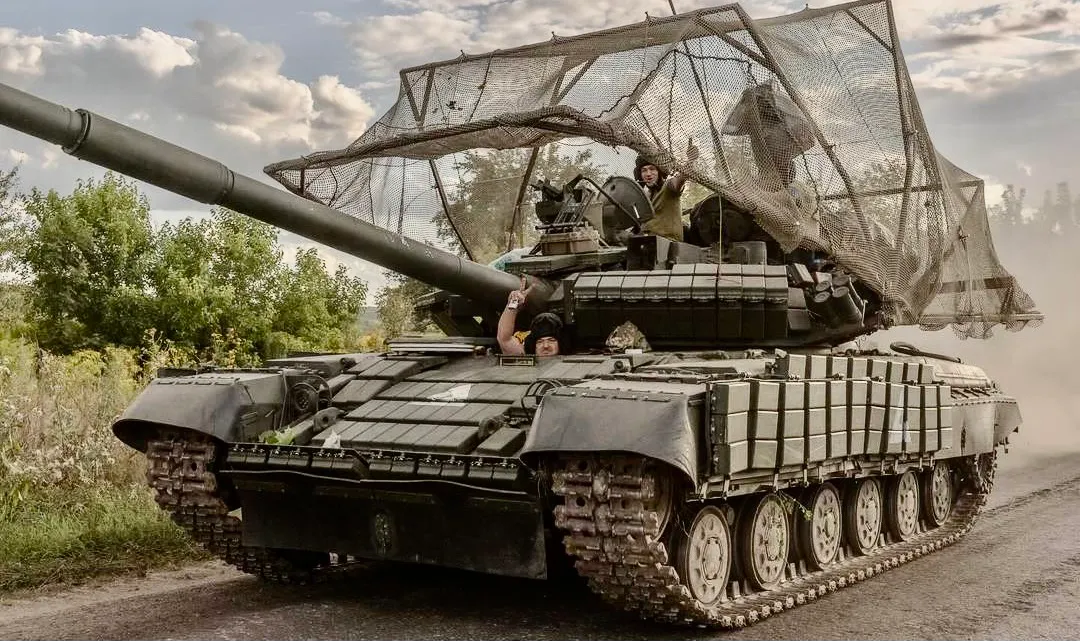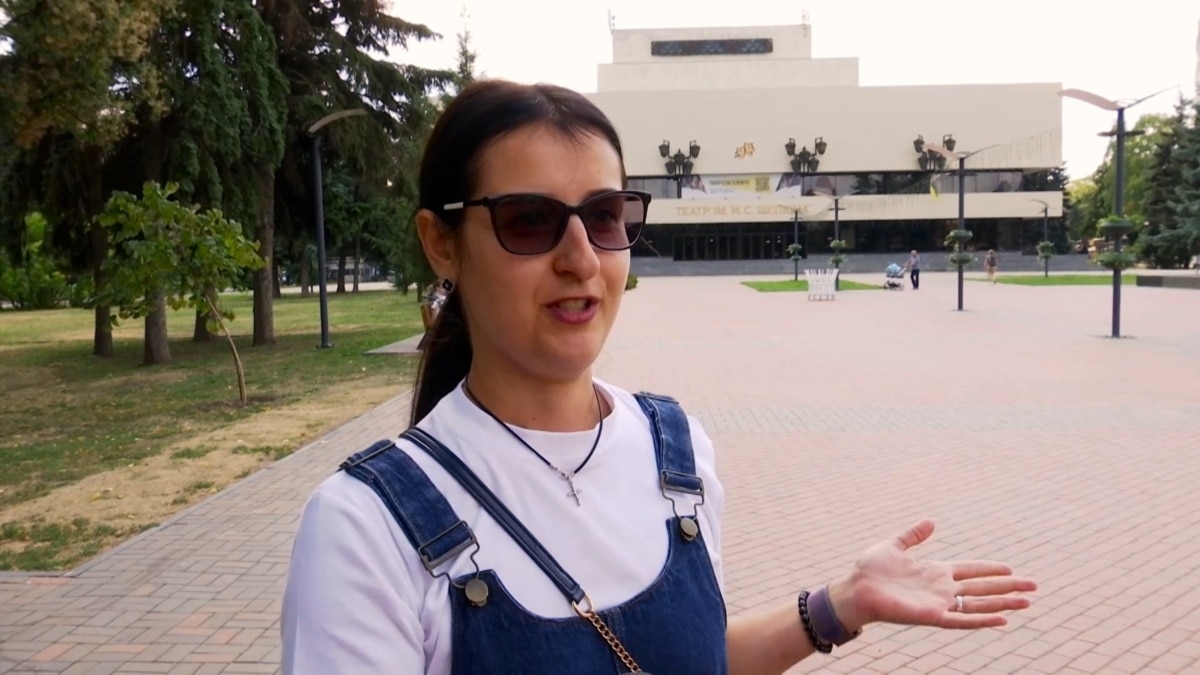I note that Ukarine is adopting a interesting standardized "Cope cage". It appears to be able to fold and likley is meant to be dual purpose, meant to snag FPV drones and be used as a framework for cam nets. Likely Ukraine looked at the efficiency of several adhoc designs and adopted this as the best effect to weight/complexity ratio.
Two articles by Elisabeth Gosselin-Malo a staff writer for Defence News:
----------
Low-cost first-person-view drones are proving increasingly capable of striking larger platforms — such as combat helicopters — in
Ukraine, as their pace of development has accelerated to allow them to fly faster and further.
On Aug. 7, the
Ukrainian military released footage showing one of its unknown models of
FPV drones successfully hitting the tail rotor of a Russian Mi-28 Havoc attack helicopter over the battlefield.
The hit represented one of the first filmed strikes on a manned Russian helicopter, in flight, using a Ukrainian FPV platform. While these variations of drones have been used widely
across the battlefield, experts say efforts to use them to bring down larger, expensive aircraft have been previously unsuccessful.
“There were numerous attempts of Ukrainian FPVs trying to chase Russian helicopters before, but all such attacks were near misses,” Sam Bendett, a research analyst at the U.S.-based Center for Naval Analyses, said. “It’s difficult to pilot an FPV drone towards a military helicopter flying at high speeds.”
Although it is not possible from the available recording to certify the overall impact of the hit on the aircraft, Bendett says that the fast-paced evolution of these small drones and the ways they can be used should be watched closely by militaries globally.
“The sky over the [Ukraine] battlefield is now teeming with fast-flying FPVs hunting much larger prey, and assuming one can be piloted to the helicopter’s vulnerable part — like its rear propeller — major damage can be done,” he said.
Helicopters have proven especially vulnerable throughout the war in Ukraine, due in part to the proliferation of ground-based air defenses that have rendered manned flight across the battlefield extremely difficult.
As of July 27, Ukraine’s military intelligence unit, HUR, reported that Russian forces have lost up to 326 helicopters since the start of the invasion. Bendett notes that some of Moscow’s rotorcraft are larger and fly at slower speeds than the Mi-28, which could offer more occasions for a successful FPV attack.
FPV drones were introduced relatively early on in the war to fulfill different tasks. In late 2023, Ukrainian President Volodymyr Zelenskyy announced the country’s intention to produce one million of the platforms in 2024.
Whereas initially the drones had a significantly limited range, between 3 to 5 kilometers on average, Bendett says that number has expanded to 15-20 kilometers today.
The future use of FPVs in combat will likely involve them flying “in swarms and groups in order to overwhelm adversary defenses,” according to Bendett.
Beyond this, other military experts argue that the rise of this new threat alongside the already exposed vulnerabilities of helicopters will necessitate a reconsideration of the use and role of rotary aircraft.
“The future use of helicopters in combat can and should be rethought, especially with the growth of unmanned systems,” Serhii Kuzan, a former adviser to the Ukrainian Ministry of Defense, told Defense News. “It is quite likely that their role as strike means may change after the Russian-Ukraine war, as potentially this feature will be used by attack drones or even unmanned helicopters.”
----------
And,
from the Globe and Mail:
It’s about time Canada’s lagging counterdrone industry gets a revamp
After years of underfunding, it is high time that Canada’s lagging counterdrone industry gets the revamp it desperately needs to effectively defend its skies against unmanned aerial systems.
This rapidly evolving technology, commonly known as a drone, is an aircraft that can fly without a human pilot. Drone threats come in many shapes and sizes, including miniature ones – dubbed “mini” and “micro” aerial vehicles in defence jargon – which weigh
less than 250 grams.
The wide-scale deployment of these weapons in the
Ukraine war has military experts warning of the serious threat they pose to civil and military targets, as their low-altitude flights allow them to operate outside traditional radar coverage and go undetected by existing air defence systems.
“We’re seeing the pervasive use of micro and mini drones on the battlefield in Ukraine and every major military is taking note – they are cheap, fast and the technology is evolving on the time scale of months rather than years,” Jae Daniel, co-founder of AIM Defence, a Melbourne-based anti-drone company, told me.
The Canadian
military seems to be paying attention. Concerns about the country’s military readiness to confront new threats from adversaries were voiced by the new Chief of the Defence Staff, General Jennie Carignan,
during a press conference after her appointment ceremony in July.
The North Atlantic Treaty Organization is increasingly conducting exercises with a focus on countering these unmanned systems. One official told me at a recent training event in Romania that they view small drones as one of the most significant current threats in military conflicts.
Canada
recently became the fifth NATO country to test above-the-horizon lasers to defeat drone threats in open space as part of the Innovation for Defence Excellence and Security (IDEaS) program’s Counter Uncrewed Aerial Systems
contest in Suffield, Alta.
Dubbed the Sandbox, the three-week initiative was organized by the Department of National Defence (DND) and the Canadian Armed Forces (CAF) to accelerate the testing of a variety of counterdrone technologies.
Three prior editions have been held at Defence Research and Development Canada’s Suffield Research Centre, as it possesses one of the world’s largest outdoor laboratories, with about 500 square kilometres of terrain, essential for conducting these types of demonstrations. Participants hailing from Canada, Australia, the United States, Israel and Britain competed for three monetary prizes based on their performance and growth potential as assessed by the DND and the CAF.
“This was the first time that directed energy [weaponry] was allowed to enter the Sandbox – prior years have focused on more traditional defeat technologies, such as jamming and bullets,” said Jessica Glenn, the other co-founder of AIM Defence, which took home the $1-million first prize
. Fractl:1 was the system brought by AIM, which integrates a high-power laser with the company’s own AI tracking system, able to precisely target specific parts of the drone and neutralize it from more than a kilometre away.
“During the testing, a provided ‘Red Team’ flew a range of drone types, including first-person-view, fixed-wing and quadcopter drones, in different patterns and with different payloads – some of these were representative of real-world engagements and others were designed to safely push the edges of Fractl,” Ms. Glenn said.
The joint second-place prize went to Canadian company DARIT Technologies and the University of Toronto’s Prandtl Dynamics, which both won $375,000.
High-energy lasers are optical devices that produce a very focused beam of light, through which they can destroy an unmanned aerial vehicle’s electronics. These systems have gained interest in recent years owing to their lower cost and their ability to mitigate threats more quickly than other counterdrone technologies on the market.
According to Matt Ceh, who was the lead defence scientist at this year’s contest, Canada is increasingly exploring this type of equipment, as
lasers “can provide a solution that minimizes collateral damage when compared to guns.”
While investments in both research and development in the counterdrone sector should have been made years ago, these types of events and the expansion of the IDEaS program are a good indication that Ottawa is taking drone threats seriously.
In order to be a technologically advanced fighting force, as highlighted in the latest national defence policy, the DND and the CAF must double down on efforts to match the pace of drone proliferation. This begins by dedicating greater funding to the maturing industry and committing to acquiring effective weapons.
Dr. Daniel said his company is hopeful that their win will represent the beginning of a long-term partnership with the Canadian military.
Ultimately, what will be paramount is for the DND to translate this testing and interest into concrete orders to acquire a variety of counterdrones systems. Only then will Canada be ready to protect soldiers from the imminent threat posed by drones.
----------
For information and consideration by those who are far better informed than I about UAVs and the modern, 21st century battlefield.



www.rferl.org





 www.rferl.org
www.rferl.org

